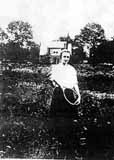Around 1880, Robert Turner founded the Olentangy Villa Tavern. It was a small picnic grounds and offered boating and swimming, perhaps a couple rides. By 1895 the park came to be owned by the Columbus Railway, Power and Light Company; enabling the electric company to earn money from both its electric streetcars and from electricity at the park, and ensuring streetcar traffic (with its use of electricity) not only during weekdays when commuters traveled to their jobs in the city, but also on weekends when residents traveled by streetcar to the park. In 1899, brothers Joe and Will Dusenbury purchased about 100 acres of the park and built it up into a state-of-the-art amusement park with nationally renowned entertainment in a lovely, picturesque setting. They offered rides, a pool, bowling alley, canoeing, an amphitheatre, even a Japanese Village purchased from the St. Louis Exposition. Many long-time residents recall happy and exciting days spent at the park.
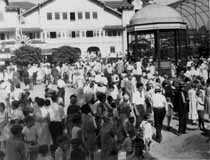
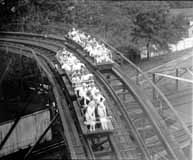
Eventually the park began to decline, and was eventually sold, and then sold a couple more times. In 1937 L.L. Leveque purchased the park and in 1939, built the Olentangy Village Apartment Community in the park’s place. (Photo courtesy of the Clintonville Historical Society)
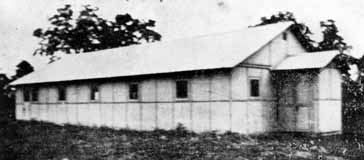
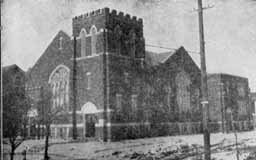 This is the newer Crestview Presbyterian Church, built in 1922 at Tulane and Esmond. (Photo courtesy of the Clintonville Historical Society)
This is the newer Crestview Presbyterian Church, built in 1922 at Tulane and Esmond. (Photo courtesy of the Clintonville Historical Society)

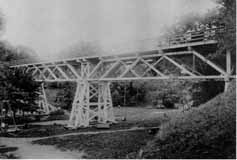 The streetcar came right to the entrance of the park, and from there attendees walked over a pedestrian bridge to get into the main park. This is a picture of the “South Glen Bridge.” (Photo courtesy of Chris Bourne)
The streetcar came right to the entrance of the park, and from there attendees walked over a pedestrian bridge to get into the main park. This is a picture of the “South Glen Bridge.” (Photo courtesy of Chris Bourne) Loop-the-loop and Shoot-the-Chutes were among the favorite rides at the park. Loop the Loop took riders on a 360-degree vertical loop. The unruffled gentleman appears unconcerned about gravity in this well-known image of the ride. The ride was said to be accident prone and was eventually torn down. (Photo courtesy of Galen Gonser)
Loop-the-loop and Shoot-the-Chutes were among the favorite rides at the park. Loop the Loop took riders on a 360-degree vertical loop. The unruffled gentleman appears unconcerned about gravity in this well-known image of the ride. The ride was said to be accident prone and was eventually torn down. (Photo courtesy of Galen Gonser)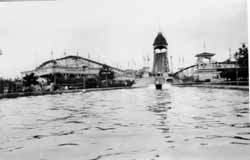 This photo shows, left to right, the Whirl Wind, Shoot-the-Chutes, and the Racer. Shoot-the-Chutes involved a long slow boat ride to the top, followed by a creaky turn, and then a steep descent, hitting water and wetting the riders to their unabashed delight. It was one of the favorite rides in the park. (Photo courtesy of Chris Bourne)
This photo shows, left to right, the Whirl Wind, Shoot-the-Chutes, and the Racer. Shoot-the-Chutes involved a long slow boat ride to the top, followed by a creaky turn, and then a steep descent, hitting water and wetting the riders to their unabashed delight. It was one of the favorite rides in the park. (Photo courtesy of Chris Bourne)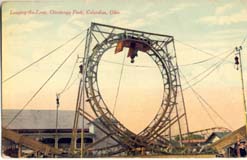
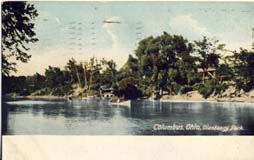
 was originally called the American Legion Park Playground, presumably because Post 82 owned it or gave it as a gift to the community. Today there is a conical mound at the park. The mound was “built” sometime in the 1960s (tentative date) from the dirt displaced by sewer line construction.
was originally called the American Legion Park Playground, presumably because Post 82 owned it or gave it as a gift to the community. Today there is a conical mound at the park. The mound was “built” sometime in the 1960s (tentative date) from the dirt displaced by sewer line construction. 